BBC News website redesign
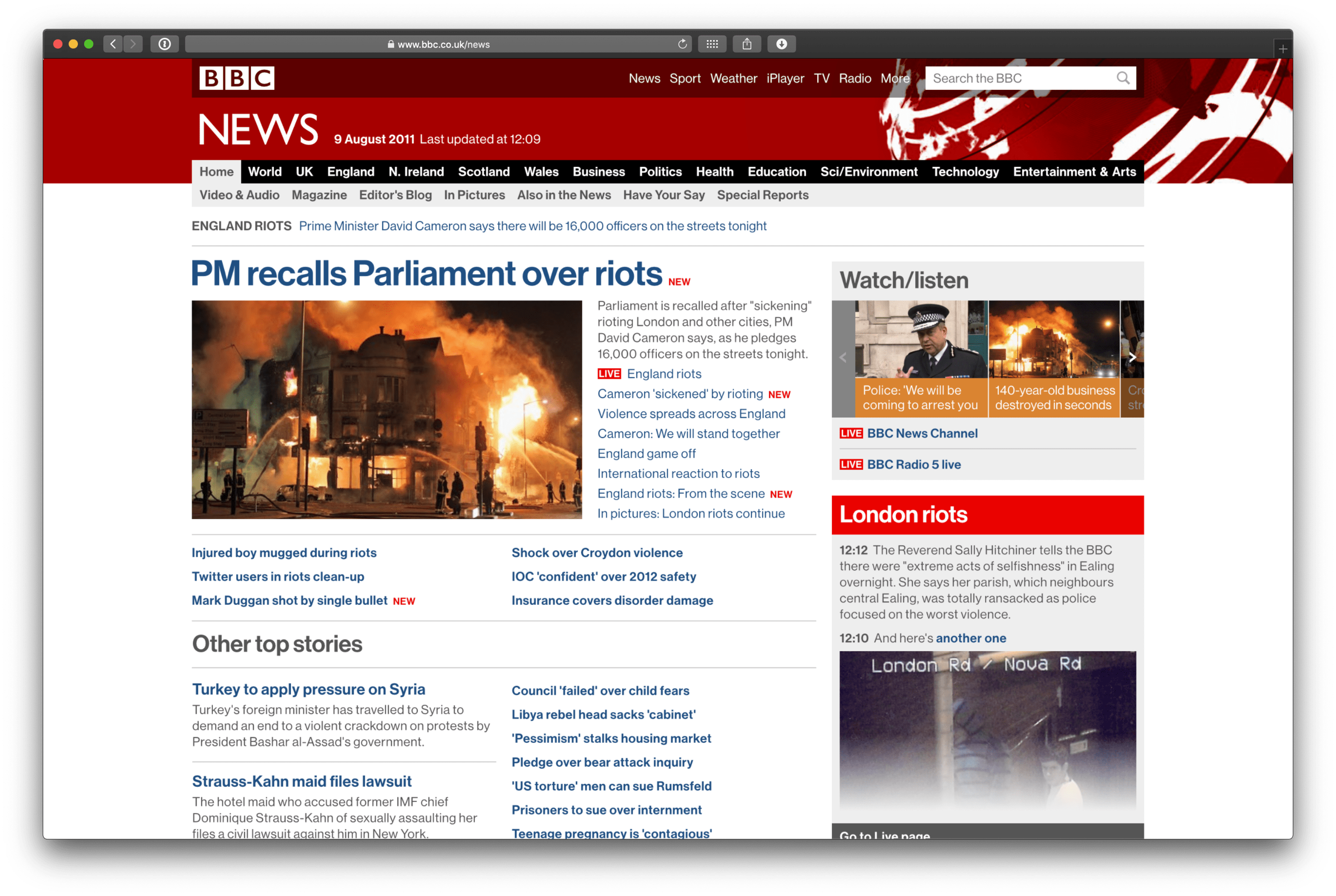


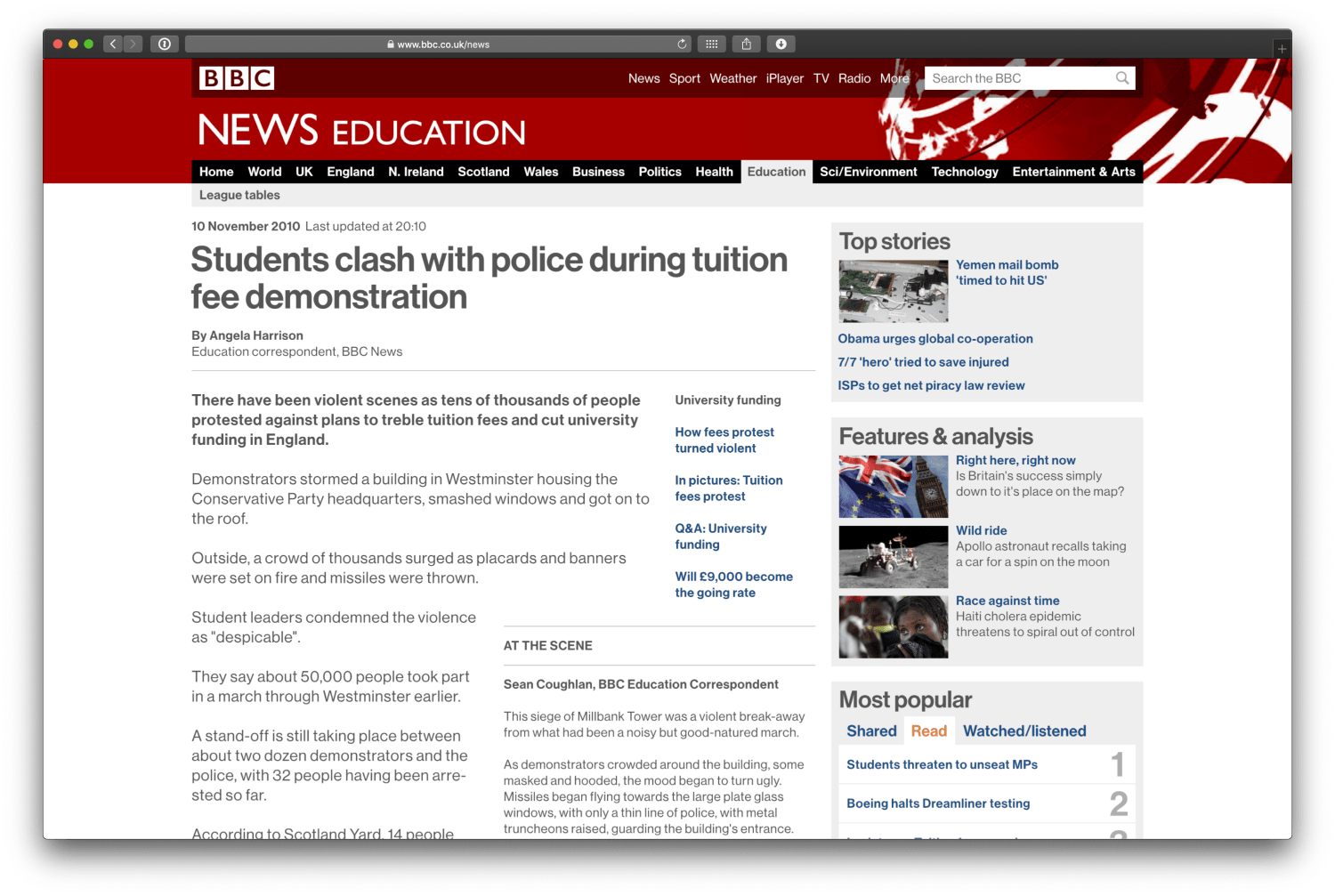
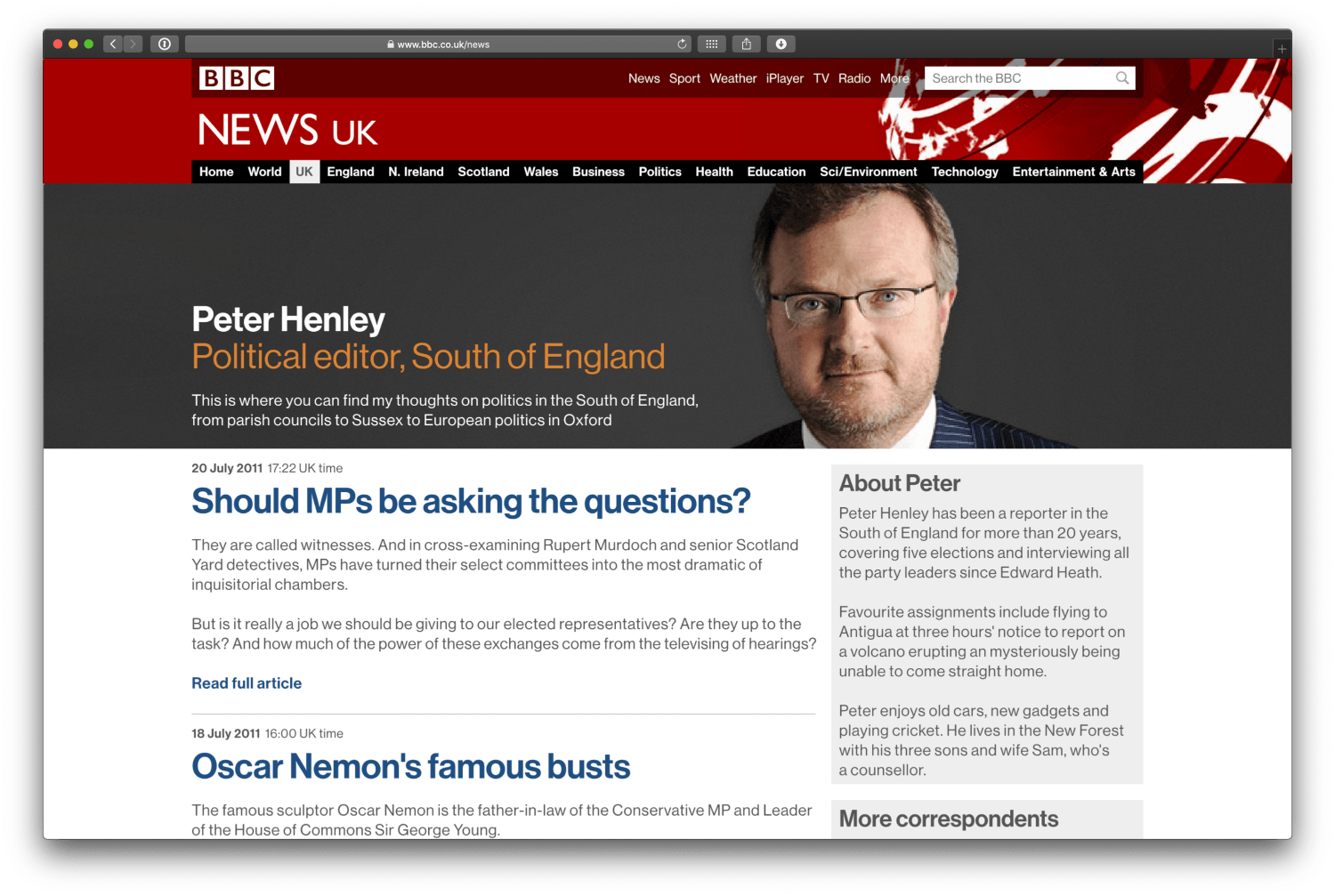
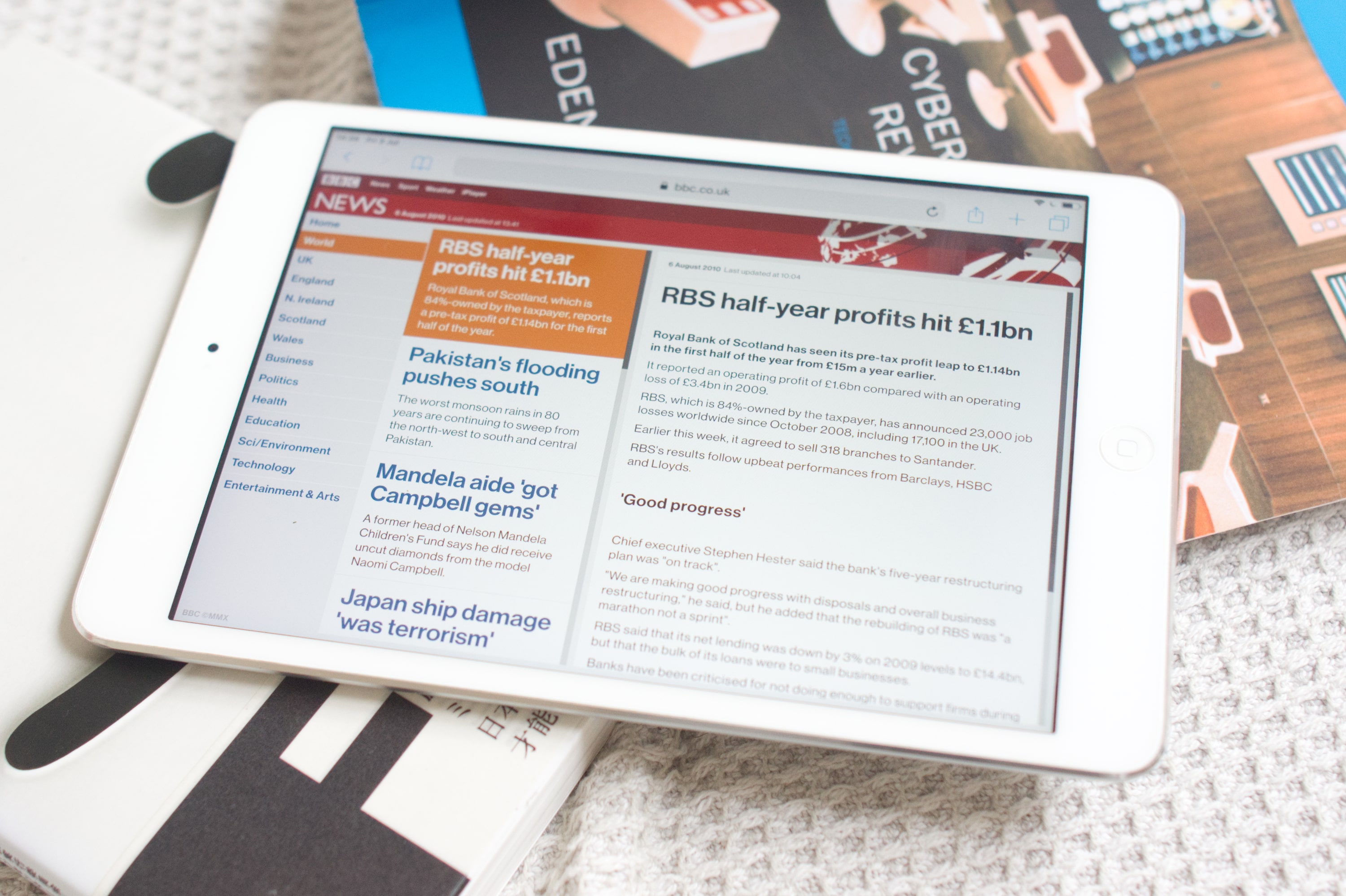
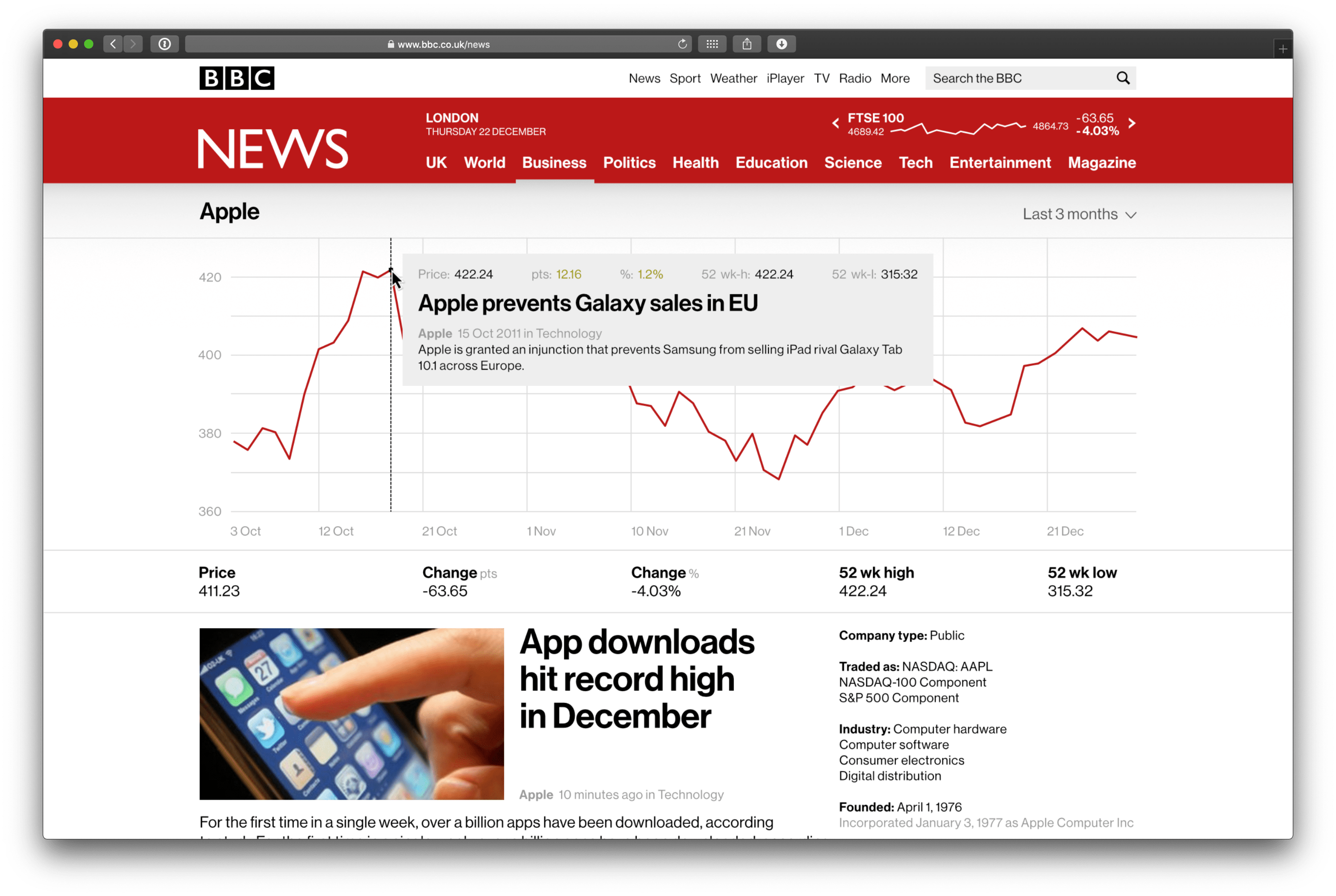
BBC News website redesign
Product design and development for the BBC
2009 — 2011
BBC News had launched its first website in 1996, as one of the first traditional news outlets to embrace the internet. By 2008 it was one of the most popular news sites globally and was growing fast. Underneath the surface, though, it was largely unchanged. It had no content database or metadata, with pages published as hard-coded table layouts with inline styles. As the BBC came under increased funding pressure, the News website needed redesigning to accommodate newer advertising formats.
I worked with product managers and design leads to create hypothesis driven, interactive prototypes. We tested and iterated them based on lab research in News’s primary markets in Europe and the USA. We developed homepage layouts that could adapt to different combinations of news stories, article pages with new storytelling components, and new image and video galleries.
I worked with the design team to develop initial visual design direction, web typography and grids. I then collaborated with Research Studios and the central BBC design authority to scale this out into a design system for all BBC digital products (known as BBC GEL). Once the brand work had settled down a bit, I worked across agile teams to write fully accessible, standards compliant production HTML and CSS page templates.
After the initial launch, I continued working with delivery teams on new products and concepts, doing interaction design, prototyping and product design for live event pages. This was a new format that integrated real-time content from across BBC News TV, radio and online coverage into a single experience.
The redesign launched on time, which was unusual for big web design projects at the time. Although it was widely criticised by competitors, we saw a 50% increase in page views within a few weeks and it was soon widely imitated across the industry. The redesign won the .Net Awards Redesign of the Year and the Excellence in Online Journalism award. See also: BBC GEL and the BBC News responsive redesign.
Creative direction by Paul Sissons, with design from Toby Bradbury, Joe Fung, Caroline Galipeau, Adam Hutchinson, James King, Chris Maslin, Adam Morris, Nina Monet, Dan Ogunkoya, Dan Shallcross and Dan Silver across a large programme of software teams. Frontend and prototyping with Barrington Haynes, Catherine Green, Simon Levy and Heenesh Patel.